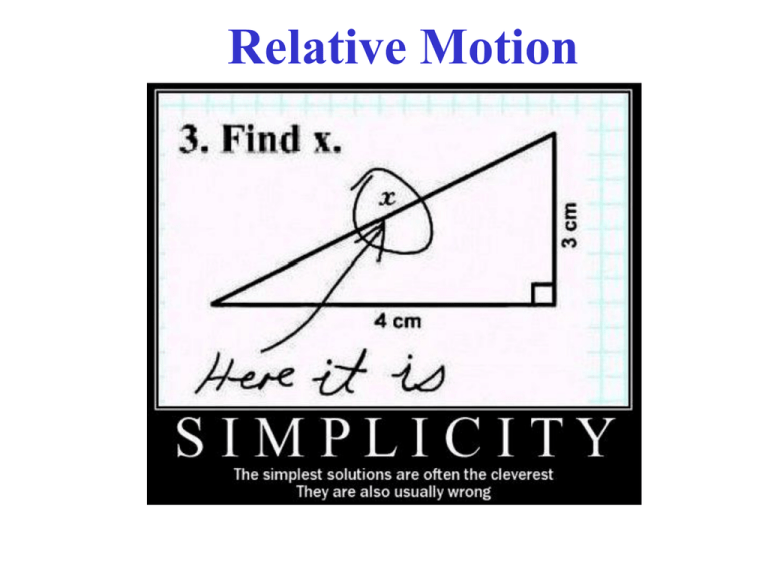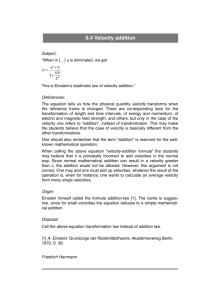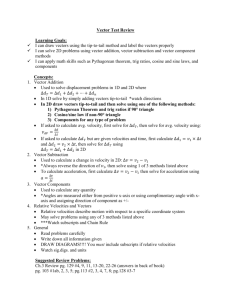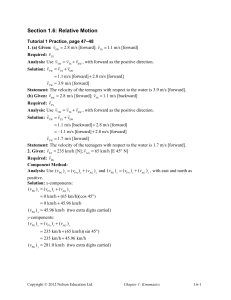Relative Motion
advertisement

Relative Motion Relative Velocity • A useful example of vector addition! • Example: 2 trains approaching each other (along a line) at 95 km/h each, with respect to the Earth. • Observers on either train see the other coming at 95 + 95 = 190 km/h. Observer on ground sees 95 km/h. Velocity depends on reference frame!! Velocities not along the same line • Need to use full vector addition. – A common error is adding or subtracting wrong velocities – A method to help avoid this is: Proper subscript labeling of velocities • CONVENTION: – Velocities with 2 subscripts. – First = object, O, – Second = reference frame, R. vOR Conceptual Example: Boat Crossing A River • Outer subscripts on both sides are the same! • Inner subscripts are the same! Can extend this to more than 2 v’s • Suppose, to the previous example, we add a fisherman walking on boat with velocity vFB = velocity of the Fisherman with respect to the Boat: vFS = vFB + vBW + vWS • Outer subscripts on both sides are the same! • Inner subscripts are the same! • Finally: Relative velocities obey: vAB = -vBA Example Example Example: Plane with a cross wind vPA = 200 km/h , N vAG = 100 km/h , from NE (to SW) vPG = vPA + vAG Use the rules of analytic addition: Compute components of vPA & vAG Add these to get components of vPG. Compute the length & angle of vPG





